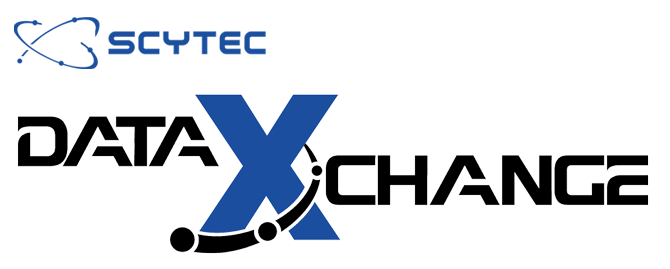How OEE machine monitoring can provide cost savings
CNC machines cut away metal and make money, but they can’t do that if they’re not running. How do you know if they’re running? Managing By Walking About is one approach, machine monitoring is a better one.
Machine monitoring shows how production equipment is being utilized at any moment in time. That knowledge can help reduce costs, improve profit and even grow your business. It can also provide insights into machine condition and maintenance requirements. Keep reading to learn how it’s done and the benefits it yields.
OEE: THE OPPORTUNITY DETECTOR
Many manufacturers use Overall Equipment Effectiveness (OEE) to identify improvement opportunities on their production floor. OEE measures losses due to poor quality, non-availability of equipment and low performance. On a CNC machine for instance, it might reveal that running time is low because the machine is waiting for parts. It might show that a press is spending more time being set up than punching metal and that a robot welder is producing a large number of bad parts.
OEE data provides the basis for prioritizing improvements. If scrap is a bigger cause of loss than running at low speed, focus on scrap reduction first. Applying the data this way, a manufacturer can improve how they use the resources available to them. That increases capacity and reduces waste, but there are two caveats before seeing those benefits in the bottom line.
OEE is best applied to individual machines, (preferably bottleneck equipment,) where it can lead to a quantifiable throughput improvement. It also has value in cells and on production lines. However, producing a single number for an entire operation yields less useful information.
OEE is only as good as the data entered into the calculation. If those numbers are composed of estimates and recollections of what happened hours or days ago the OEE statistics will be of limited value.
From this it should be clear what’s needed for good, actionable OEE data: accurate, preferably real-time, measurement of what the production equipment is doing. That’s where machine monitoring comes in.
MACHINE MONITORING FOR OEE
As an enabler of Industry 4.0, many newer machines incorporate a communication interface for outputting status information. FANUC has a proprietary interface called FOCAS while many other machines use MTConnect. In addition, there’s OPC-UA and the much older RS 232 protocol. It’s even possible to have legacy equipment transmit information by linking relays, motors and sensors to a Status Relay Controller (SRC.)
Status reporting is a first step, but machine monitoring also needs a tool to collect and make sense of all the data. This is the role of analytics products like Scytec’s DataXchange.
DataXchange gathers status data from every connected machine and turns it into actionable information presented on fully customizable dashboards. For machines that aren’t or can’t be connected it’s possible to enter data via tablet or by scanning barcodes.
DataXchange provides, among other outputs, real-time OEE reporting. This is achieved by combining run rate information with part counts, scrap rates and machine availability. Using the dashboards, managers can see where utilization is down and where time or product is being lost.
COST SAVINGS FROM MACHINE MONITORING
Machine monitoring provides real-time data that lets managers react while there’s time to make a difference. (Weekly or even just daily reporting only provides a historical snapshot, by which time it’s too late.) This ability to react quickly leads to significant cost savings. In most manufacturing businesses the biggest areas of impact are:
- Operations
- Quality
- Maintenance
- Savings in Operations
Machine monitoring data lets managers optimize resource utilization. If a machine is stopped, awaiting repair, workers can be reassigned rather than waiting for Maintenance to arrive. Should a line be running below target rate managers can initiate appropriate speed-up actions. If a cell is idle waiting for material, again, that knowledge can trigger corrective action.
Savings accrue in several ways, notably:
- Improving bottleneck utilization increases capacity, allowing the business to take on more work and diluting overheads.
- Increased capacity can reduce overtime working, (often paid at premium rates,) and energy consumption.
- Improved labor allocation and utilization can reduce the headcount required.
- Reduced waste of consumables such as cutting inserts.
SAVINGS IN QUALITY
Part counts highlight losses due to scrap. Some scrap occurs at start up and shut down while process variation and defects in material and assembly can account for the rest. Machine monitoring makes these numbers more visible, letting managers prioritize improvement actions as appropriate.
Savings result from improved material utilization along with saving the labor and machine time needed to produce the defective product.
SAVINGS IN MAINTENANCE
Thus far machine monitoring has been discussed in the context of improving performance. While primarily the role of condition monitoring, machine monitoring can also offer insights into maintenance requirements. Preventative maintenance can be performed based on actual usage rather than just based on time alone.
Unplanned stoppages due to breakdowns disrupt production schedules and can be very expensive. Machine monitoring data can indicate breakdown frequency, (Mean Time Before Failure – MTBF) as well as time to repair (Mean Time to Repair – MTTR.) It’s also possible that downtime for planned maintenance is consuming too many of the total hours available, which would show up in the OEE results. This information provides a basis for adjusting maintenance schedules and even manning levels, so increasing capacity.
MAKE BETTER USE OF TIME WITH MACHINE MONITORING
Benjamin Franklin famously pointed out that time is money. Machine monitoring, with results often presented as OEE, reveals how machines are using the time available. OEE and machine monitoring don’t directly save money, but the information they provide lets managers take actions to increase utilization. That in turn leads to better usage of the time available, which results in cost savings.


